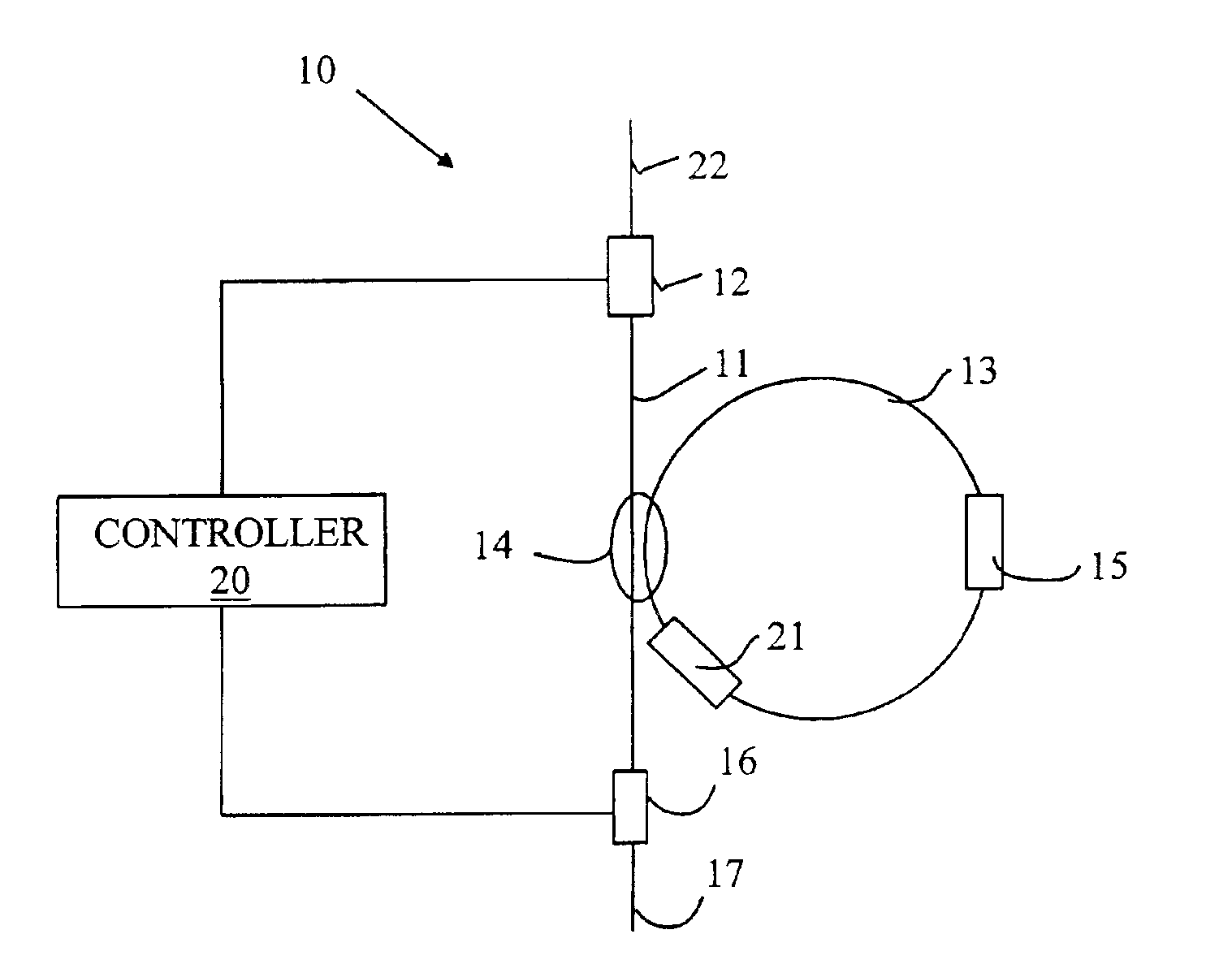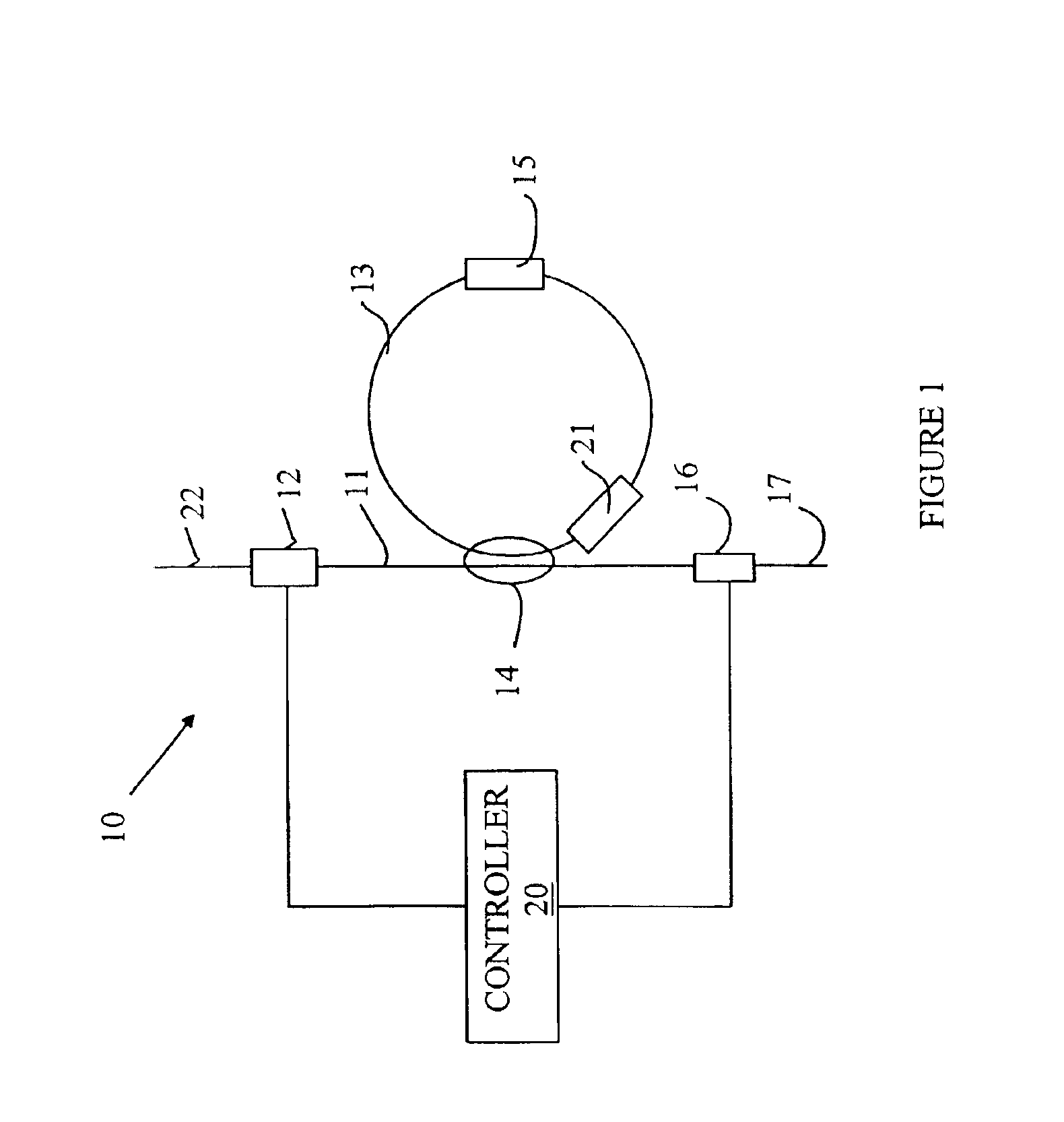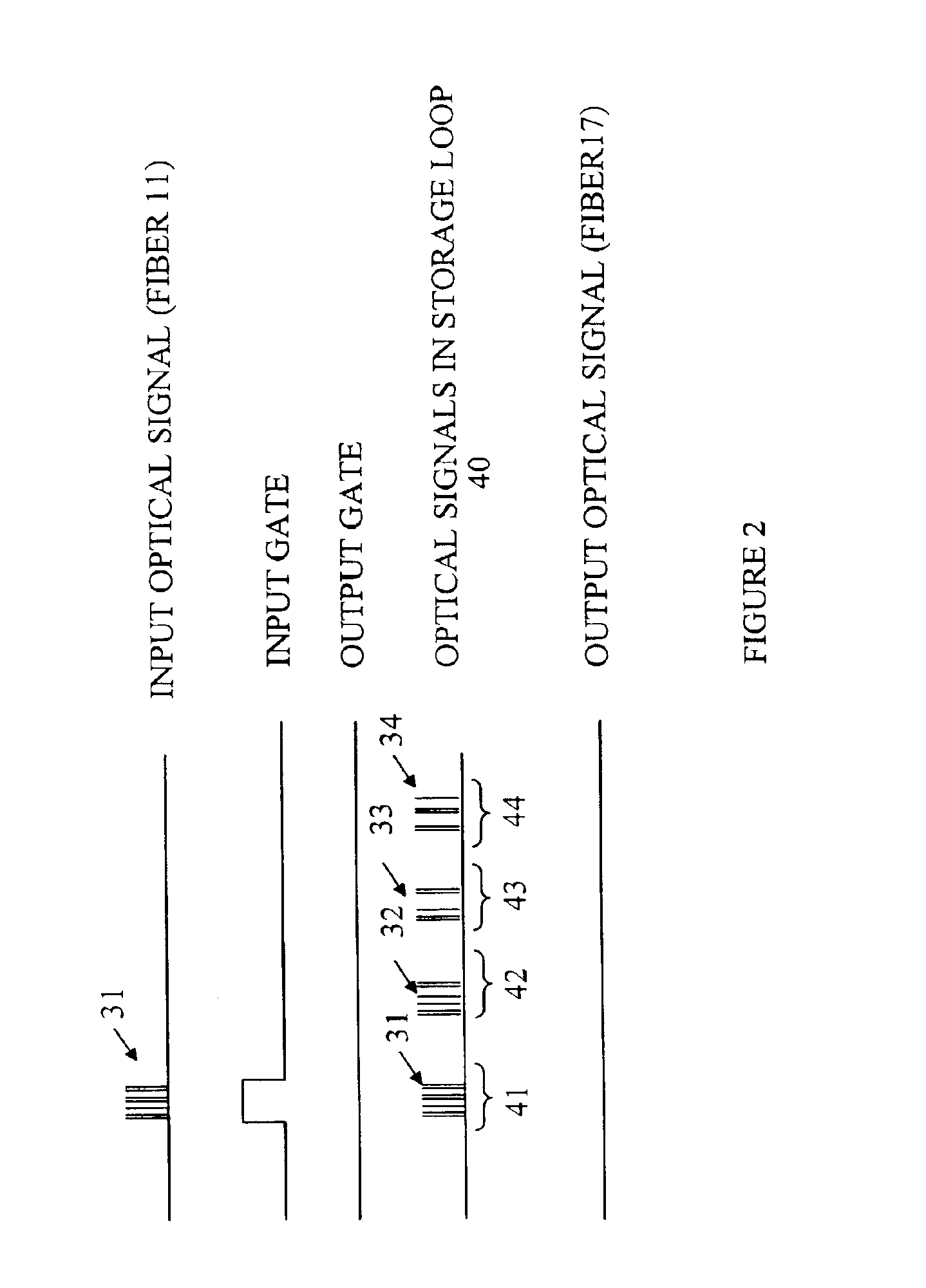Optical cache memory
a cache memory and optical data technology, applied in logic circuits, pulse techniques, instruments, etc., can solve the problems of high data rate, complex circuitry, and inability to operate at high data ra
- Summary
- Abstract
- Description
- Claims
- Application Information
AI Technical Summary
Problems solved by technology
Method used
Image
Examples
Embodiment Construction
[0014]The present invention avoids the costly circuitry discussed above by providing an optically based cache for storing optical data packets. The manner in which the present invention stores an optical signal can be more easily understood with reference to FIG. 1, which is a schematic drawing of an optical cache memory 10 according to one embodiment of the present invention. Optical cache memory 10 stores and retrieves optical packets in the form of a modulated optical signal that specifies a plurality of bits of data. Any appropriate form of optical modulation can be utilized including amplitude modulation, phase modulation, and polarization modulation. An optical packet that is to be stored in optical cache memory 10 is input to optical cache memory 10 on optical fiber 22 through optical switch 12. A portion of the light traversing optical fiber 11 is diverted into storage loop 13 by coupler 14. Each time the optical packet traverses storage loop 13, a portion of the circulating...
PUM
 Login to View More
Login to View More Abstract
Description
Claims
Application Information
 Login to View More
Login to View More - R&D
- Intellectual Property
- Life Sciences
- Materials
- Tech Scout
- Unparalleled Data Quality
- Higher Quality Content
- 60% Fewer Hallucinations
Browse by: Latest US Patents, China's latest patents, Technical Efficacy Thesaurus, Application Domain, Technology Topic, Popular Technical Reports.
© 2025 PatSnap. All rights reserved.Legal|Privacy policy|Modern Slavery Act Transparency Statement|Sitemap|About US| Contact US: help@patsnap.com



